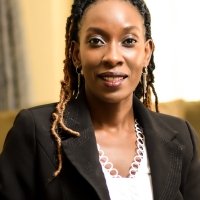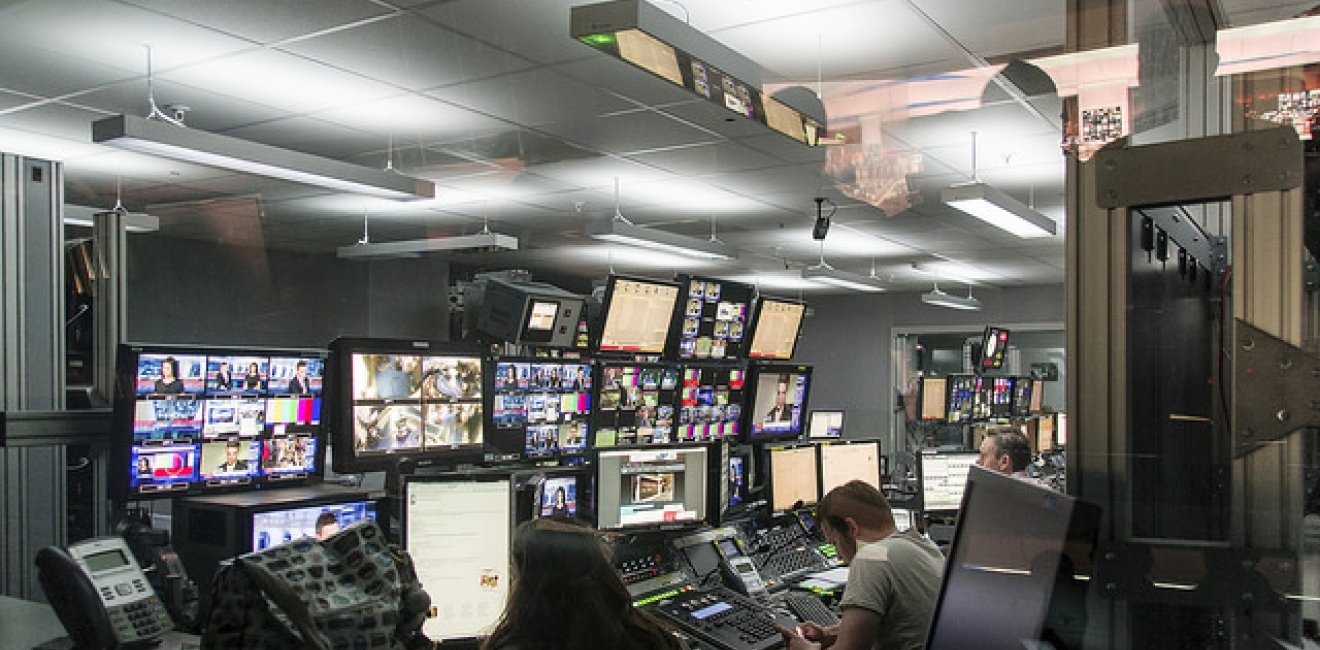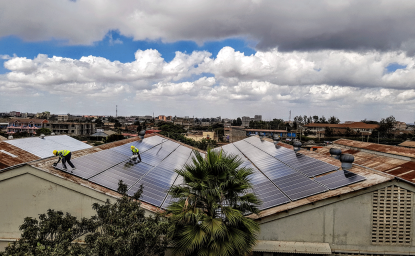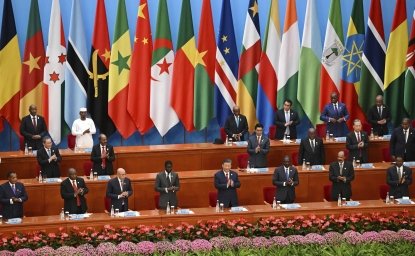
A blog of the Africa Program
A news control room. Photo courtesy of Ross G. Strachan via Flickr Commons.
For decades, the mass media has shaped the world's view of what is important in our daily lives — our social and political realities — through its ability to influence information and how it is presented.[1] As such, the media has been, and still is, a powerful tool in shaping our perceptions of what matters in our world today. If used well, this inherent power of the media can be of great value in the prioritization of the demographic dividend framework in Africa's policymaking processes. The media has the power to raise the profile of the demographic dividend agenda in Africa's development conversations and sustain policymakers' attention. At any given time, policymakers have several competing policy priorities that may be influenced by their personal interests, opinions, and worldview,[2] not to mention the complex nature of the policymaking process that involves many moving pieces.[3] Media coverage of issues relating to the demographic dividend is critical now more than ever. Despite high-level conversations on the demographic dividend over the past five years, including the 2017 African Union Summit where African leaders committed to investing in the large youthful population to steer development,[4] there is still worry that the demographic dividend 'hype' may die out if these conversations do not translate into action at the policymaking level.
A Double-Edged Sword
The media is a double-edged sword; it can either benefit or curtail the progress of the demographic dividend agenda in Africa. For instance, the experience of experts' engagements with policymakers and other stakeholders on comprehensive sexuality education in Kenya is a testimony to this reality. Comprehensive sexuality education for adolescents and youth is one of the key investments Kenya needs to make for the country to harness a demographic dividend.[5] Evidence shows that comprehensive sexuality education for adolescents reduces unintended pregnancies, sexually transmitted infections (STIs) including HIV/AIDS, and other negative sexual and reproductive health outcomes,[6] which are a barrier to the country's efforts towards harnessing a demographic dividend.
Policymakers in the health ministry have displayed greater buy-in on comprehensive sexuality education than their counterparts in the education ministry.[7] The current curriculum on sex education places an emphasis on abstinence with teachers taking a conservative approach that discusses sex as immoral and harmful, as well as not teaching safe sex practices for those who choose not to abstain.[8] While this approach resonates with the cultural and religious views of many, it has not helped reduce the negative sexual and reproductive health outcomes faced by Kenyan adolescents. Evidence shows that an 'abstinence-only' approach does not effectively address negative sexual and reproductive health outcomes among adolescents such as teenage pregnancies, unsafe abortions, and HIV/AIDS infections, among others.[9]
There is a clash, with culture and religion on one side, and the evidence on how to improve the sexual and reproductive health of adolescents on the other side. Religious leaders are particularly opposed to comprehensive sexuality education, as they view it as being too 'explicit' and an agenda that promotes risky sexual behavior as 'healthy and normal.'[10] Some groups have termed this as 'a foreign agenda.'[11] Despite this divide, the media has done very little to alleviate the situation. Instead, media practitioners have adopted sensational reporting, giving those opposed to comprehensive sexuality education more opportunity to air their positions, with very little voice to experts who know what the evidence from research says. In doing so, they have failed to use their platform as a means to engage opposing sides for incisive discussions. These discussions could have the objective of laying to rest myths and misunderstandings on what comprehensive sexuality education is, how it can improve the lives of adolescents and youth, and why it matters for national development. This could also provide an opportunity to find a middle ground on how comprehensive sexuality education can be culture- and religious-sensitive. Has the media sustained the sexuality education agenda in Kenya? Somewhat. The occasional coverage has put the subject on the national agenda. But is the agenda moving in the right direction? Hardly. Until the opposing sides can agree, comprehensive sexuality education will remain a thorny issue in Kenya and meanwhile, we shall continue witnessing the rising cases of teenage pregnancies[12] and illicit sexual behavior[13] among adolescents and youth.
Now What?
In this tussle between evidence and the strong foundations of cultural and religious values, the reality is that irrespective of how robust the evidence is, cultural and religious objections have to be taken into account if sexuality education in Kenya is to achieve the ultimate goal of reducing negative sexual and reproductive health outcomes among adolescents and youth. The media has a critical role to play in the convergence of the differing opinions, and this can be strengthened by considering the following elements. First, in the context of demographic dividend research, how well does the media understand the role sexual and reproductive health outcomes play in a country's prospects for harnessing a demographic dividend and achieving long-term development aspirations? If there are knowledge gaps among media practitioners, experts should consider trainings and formal/informal discussions with media practitioners. Second, is the current framing and terminology helping the cause? The use of the term 'comprehensive' has caused apprehension among groups opposed to sexuality education because as mentioned earlier, these groups believe the content is 'too explicit' and the explicit nature is viewed as being 'deliberate'. Therefore, development experts and media practitioners should put their heads together and identify context-savvy messaging that does not jeopardize success. Ultimately, the goal is to improve adolescent and youth sexual and reproductive health outcomes, and everybody should work for the good of this generation. As experts continue seeking mechanisms to get greater buy-in for sexuality education to be taught to in- and out-of-school adolescents, the media should not be sidelined. Experts should consider reaching out to media practitioners and ensure they are well-equipped to provide factual information to the public. Conversely, media practitioners should also reach out to experts and allow them to discuss the evidence first-hand. The media sets the agenda for the masses, and it needs to be the right agenda. To achieve this, it has to be a collective effort.
Diana Warira is a former Southern Voices Network Scholar for Peacebuilding during the Spring 2018 term. She is a Communications Officer for the African Institute for Development Policy in Nairobi, Kenya, which is a member organization of the Southern Voices Network for Peacebuilding.
[1] Maxwell E. McCombs and Donald L. Shaw, "The Agenda-Setting Function of Mass Media," The Public Opinion Quarterly 36, No. 2 (Summer, 1972), pp. 176-187, https://www.unc.edu/~fbaum/teaching/articles/POQ-1972-McCOMBS-176-87.pdf.
[2] Matthew C. Nisbet, "The Ethics of Framing Science," in Communicating Biological Sciences: Ethical and Metaphorical Dimensions, eds. Nerlich B, Larson Brendon, and Elliot R (London: Ashgate, 2009), 54.
[3] Gary C. Bryner, "Public Organizations and Public Policies," in Handbook of Public Administration, eds. B. Guy Peters, and Jon Pierre (London: Sage Publications, 2003), 301.
[4] "Final Declaration: Investing in Youth for Accelerated Inclusive Growth and Sustainable Development," African Union, December 7, 2017, https://au.int/en/pressreleases/20171207/final-declaration-investing-youth-accelerated-inclusive-growth-and.
[5] National Council for Population and Development, "National Adolescent and Youth Survey," December 2015.
[6] UNESCO, "Global Review Finds Comprehensive Sexuality Education Key to Gender Equality and Reproductive Health," March 4, 2016, https://www.un.org/youthenvoy/2016/03/comprehensive-sexuality-education/.
[7] Diana Warira, "Sexuality Education for Kenya's Youth: When the Evidence is on the Wall, but Politics Gets in the Way," July 7, 2017, https://www.afidep.org/sexuality-education-kenyas-youth-evidence-wall-politics-gets-way/.
[8] Estelle M. Sidze et al., From Paper to Practice: Sexuality Education Policies and Their Implementation in Kenya (New York: Guttmacher Institute, 2017): 46, https://www.guttmacher.org/report/sexuality-education-kenya.
[9] Ibid.
[10] David Oginde, "Why the Church Opposes Bid to Introduce Sex Education," The Standard, January 21, 2018, https://www.standardmedia.co.ke/article/2001266642/why-the-church-opposes-bid-to-introduce-sex-education.
[11] Rhoda Odhiambo, "Children Rights Activists Petition Matiang'i Against Sex Education," The Star, January 12, 2018, https://www.the-star.co.ke/news/2018/01/12/children-rights-activists-petition-matiangi-against-sex-education_c1697331.
[12] Winne Atieno, "High Rate of Teen Pregnancies is a Burden To Kenya: UNFPA Official," Daily Nation, December 7, 2017, https://www.nation.co.ke/news/education/High-rate-of-teen-pregnancies-is-a-burden-to-Kenya/2643604-4218610-10jwxmd/index.html.
[13] Juma Chrispinus, "62% of High School Teens Play Sex With Multiple Partners, Watch Pornographic Content, Study, Pulse Live, March 13, 2017, http://www.pulselive.co.ke/news/immorality-in-teens-62-of-high-school-teens-play-sex-with-multiple-partners-watch-pornographic-content-study-id6360054.html.
Author

Communications Officer, African Institute for Development Policy (AFIDEP)

Africa Program
The Africa Program works to address the most critical issues facing Africa and US-Africa relations, build mutually beneficial US-Africa relations, and enhance knowledge and understanding about Africa in the United States. The Program achieves its mission through in-depth research and analyses, public discussion, working groups, and briefings that bring together policymakers, practitioners, and subject matter experts to analyze and offer practical options for tackling key challenges in Africa and in US-Africa relations. Read more





